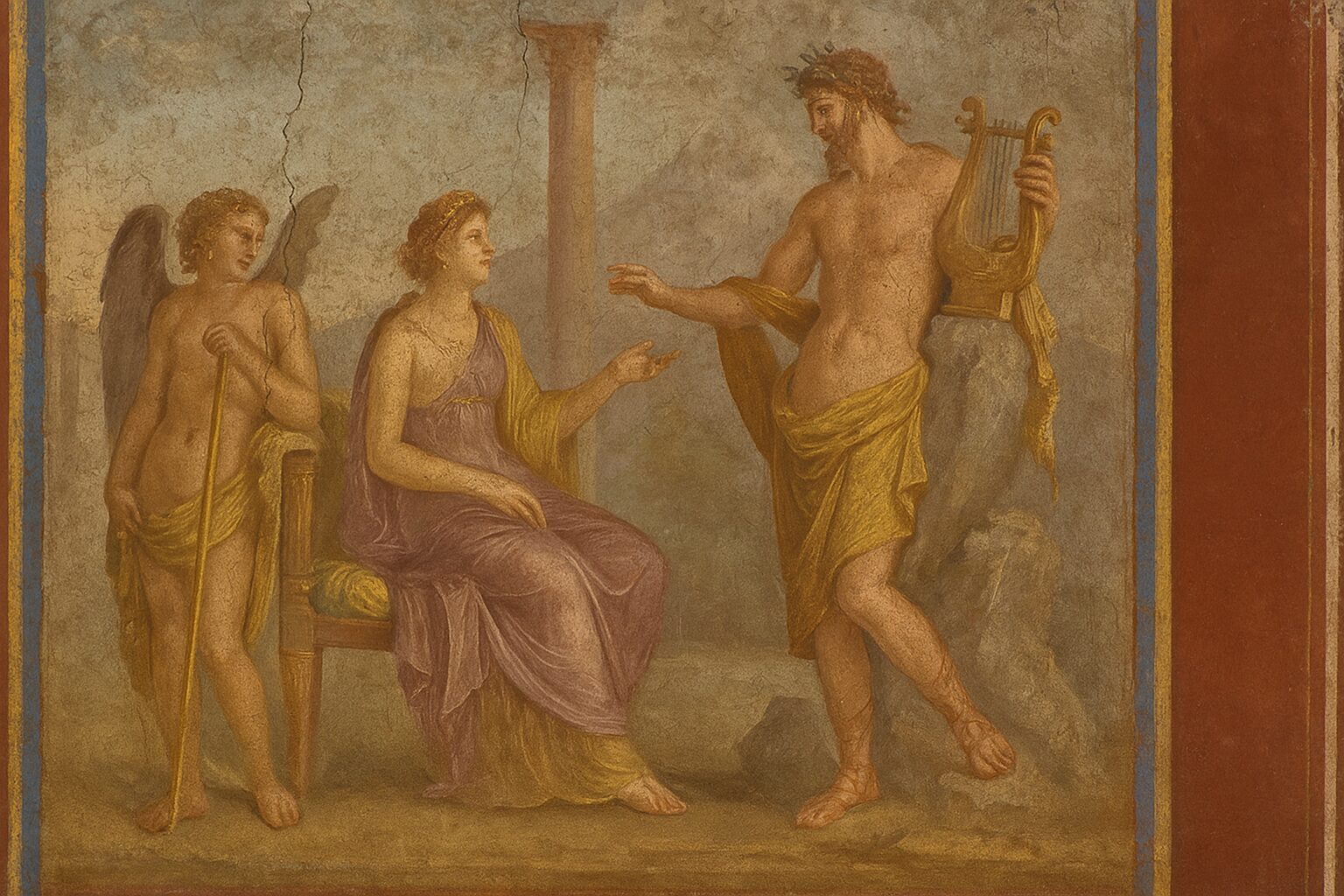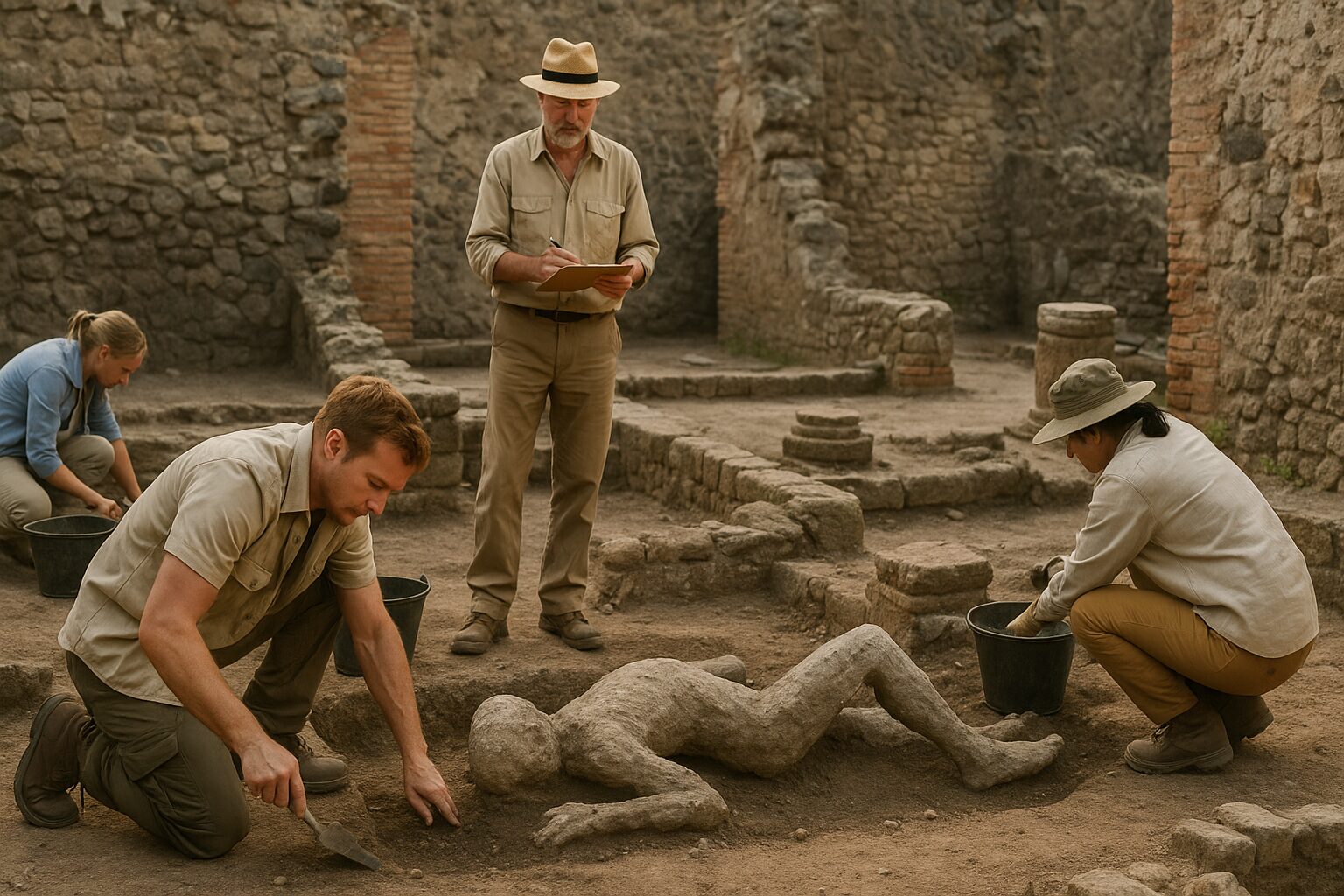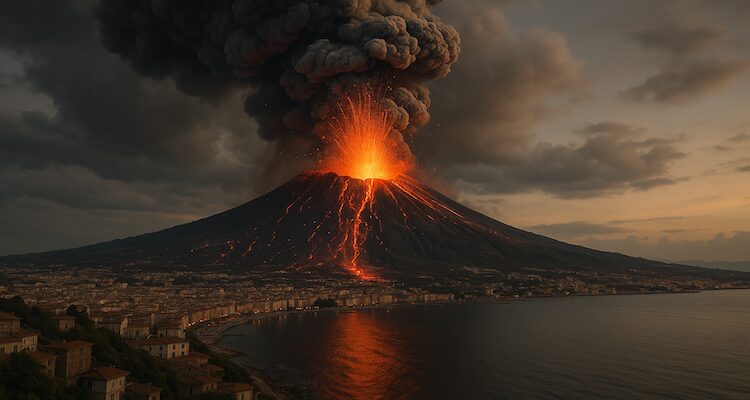Pompeii: The Roman City Frozen in Fire and Ash
Explore the complete history of Pompeii, the Roman city buried by Mount Vesuvius in 79 A.D., rediscovered as a time capsule of ancient life and human tragedy.
Introduction: A City Sealed in Tragedy
Few places in the world capture the imagination like Pompeii, the ancient Roman city buried under volcanic ash in 79 A.D. When Mount Vesuvius roared to life, the once-bustling hub near the Bay of Naples was destroyed in a matter of hours. Yet, in its destruction, Pompeii was preserved, offering the modern world a time capsule of life in the Roman Empire. From bustling streets and lavish villas to the haunting remains of its people, Pompeii is both a tragedy and a treasure.

Quick Facts: The Lost City of Pompeii
Fact |
Detail |
Founded |
7th century B.C. (by Oscan settlers) |
Location |
Near Bay of Naples, Campania, Italy |
Population (79 A.D.) |
Approx. 15,000–20,000 |
Disaster Date |
August 24, 79 A.D. |
Cause of Destruction |
Eruption of Mount Vesuvius |
Rediscovery |
First uncovered in 1599; major excavations from 1748 |
UNESCO Status |
World Heritage Site since 1997 |
Modern Visitors |
Over 2.5 million annually |
Context & Background: Pompeii Before the Disaster
A Thriving Roman Town
Founded around the 7th century B.C. by the Oscans and later shaped by the Greeks and Etruscans, Pompeii flourished when it came under Roman control in the 4th century B.C. By the time of the eruption, it was a thriving city of 15,000–20,000 people.
Wealthy Romans built grand villas adorned with mosaics and frescoes, while merchants and artisans filled the streets with trade. Taverns, bakeries, and open-air markets served the daily needs of citizens. Public entertainment thrived at amphitheaters and bathhouses, while temples honored gods such as Jupiter and Venus.
The Shadow of Vesuvius
Pompeii’s soil was rich and fertile, thanks to the volcano looming over it. The city’s vineyards and olive groves were legendary. Yet the mountain’s history of violent eruptions was largely forgotten by the 1st century A.D. To many residents, Vesuvius was a provider, not a threat.
But nature gave warnings. In 62 A.D., a powerful earthquake damaged much of Pompeii, forcing reconstruction efforts that were still underway when the fateful eruption struck 17 years later.
Main Developments: The Day Pompeii Died
Eyewitness to Disaster
Our most vivid account comes from Pliny the Younger, a Roman lawyer and writer who observed the eruption from across the Bay of Naples. In letters to the historian Tacitus, he described the first terrifying sight:
“A cloud was rising, of unusual size and appearance. Its shape resembled that of a pine tree, rising to a great height on a sort of trunk and then splitting into branches.”
Pliny’s uncle, Pliny the Elder, an admiral of the Roman fleet, sailed toward Pompeii to rescue those trapped. He never returned, overcome by toxic fumes.
The Eruption Unfolds
On August 24, 79 A.D., Vesuvius erupted violently. Ash, pumice, and rock rained down, collapsing rooftops and forcing people into the streets. Many tried to flee toward the sea, while others sought shelter indoors.
The second phase proved deadlier. Pyroclastic flows blistering surges of gas and debris swept into Pompeii at over 100 kilometers per hour. Temperatures exceeded 500°C, killing instantly. In mere moments, people were frozen in place: some shielding loved ones, others clutching valuables or praying to their gods.
By the end, Pompeii lay buried under more than 15 feet of ash and pumice. The city had vanished.
Rediscovery: From Legend to Archaeology
Centuries of Silence
After the eruption, Pompeii was forgotten. Farmers tilled fields above its remains, unaware of the city below. Medieval legends spoke of a “cursed land,” but its true story stayed hidden for over 1,600 years.
The First Excavations
In 1599, workers digging a canal stumbled upon frescoed walls and artifacts, but the site was reburied. Serious excavations began in 1748, under the patronage of King Charles III of Naples. Early efforts focused more on treasure hunting than preservation, with artifacts carted off to royal collections.

Archaeology Matures
By the 19th and 20th centuries, archaeology evolved into a science. The Italian archaeologist Giuseppe Fiorelli introduced a groundbreaking technique in the 1860s: filling voids in the ash with plaster to create casts of victims’ final moments. These haunting figures, contorted in pain or frozen in quiet repose, remain some of Pompeii’s most iconic discoveries.

In recent decades, new technology drones, ground-penetrating radar, and DNA analysis has deepened understanding of Pompeii’s people and their society.
Expert Insight: Lessons from Pompeii
Archaeologists often describe Pompeii as “the best-preserved Roman city in the world.” Unlike ruins that crumbled over centuries, Pompeii was sealed in an instant, protecting everything from amphorae of wine to scribbles of graffiti.

“Pompeii is a mirror of Roman daily life,” explains Dr. Mary Beard, professor of classics at Cambridge University. “It’s not just about emperors and generals it’s about bakers, children, slaves, and their ordinary routines. That’s what makes it so extraordinary.”
Even graffiti reveals human stories: campaign slogans from elections, love notes, and even crude jokes scratched into walls. One famous inscription reads: “We two dear men, friends forever, were here. If you want to know our names, they are Gaius and Aulus.”
Impact & Implications: Pompeii’s Legacy
A Window into Ancient Rome
Pompeii has transformed historical scholarship. Its houses show the wealth gap between elites and commoners. Its baths and amphitheaters reveal social life, while religious shrines highlight Roman spirituality.
Recent discoveries, such as a preserved fast-food counter (thermopolium) and intact skeletons in newly excavated villas, continue to reshape understanding of Roman diet, health, and mortality.
A Warning for Today
Beyond history, Pompeii is a sobering reminder of nature’s power. Naples remains one of the most densely populated regions near an active volcano. Modern volcanologists study Vesuvius carefully, hoping to avoid a repeat of the devastation.
As Dr. Pier Paolo Petrone notes:
“Pompeii is not only a lesson in archaeology. It’s a lesson in disaster preparedness. It reminds us that civilizations can fall in a single day.”
Challenges of Preservation
Ironically, the very act of excavation exposed Pompeii to new dangers. Sun, rain, pollution, and tourism threaten fragile frescoes and walls. Looting and neglect in the past further damaged the site.
Today, UNESCO and Italian authorities invest heavily in conservation. Projects such as the Great Pompeii Project have stabilized crumbling structures and uncovered fresh treasures. But balancing public access with preservation remains an ongoing challenge.
Timeline: Pompeii Through the Ages
-
7th Century B.C. – Pompeii founded by Oscan settlers.
-
4th Century B.C. – City comes under Roman control and thrives as a trading hub.
-
62 A.D. – Major earthquake damages the city; reconstruction efforts underway.
-
August 24, 79 A.D. – Mount Vesuvius erupts, burying Pompeii under ash and pumice.
-
1599 – Frescoes uncovered by chance, but site reburied.
-
1748 – First official excavations begin under King Charles III of Naples.
-
1860s – Archaeologist Giuseppe Fiorelli develops plaster cast technique.
-
1997 – Pompeii designated a UNESCO World Heritage Site.
-
Present Day – Ongoing excavations and conservation projects continue to reveal new discoveries.
Conclusion: A City that Still Speaks
Pompeii is no longer just the “lost city” it is a living archive of human history. From the opulence of Roman villas to the desperation of its final hours, Pompeii captures both the glory and fragility of civilization.
Nearly 2,000 years later, it continues to inspire, educate, and caution. Its silent streets whisper stories of ambition, joy, and tragedy, reminding us that while cities may fall, their echoes endure.
(Disclaimer: This article is based on historical and archaeological research. While it reflects widely accepted scholarship, interpretations may evolve as new discoveries emerge.)
Also Read: The Rise of Sleep Tourism: Why People Travel Just to Rest











